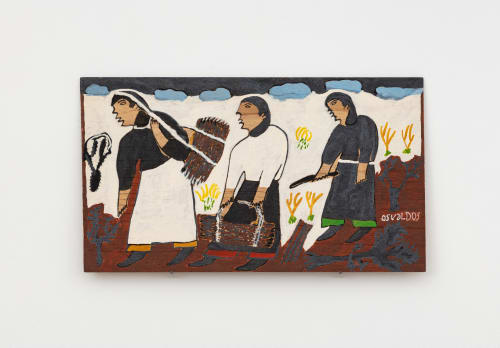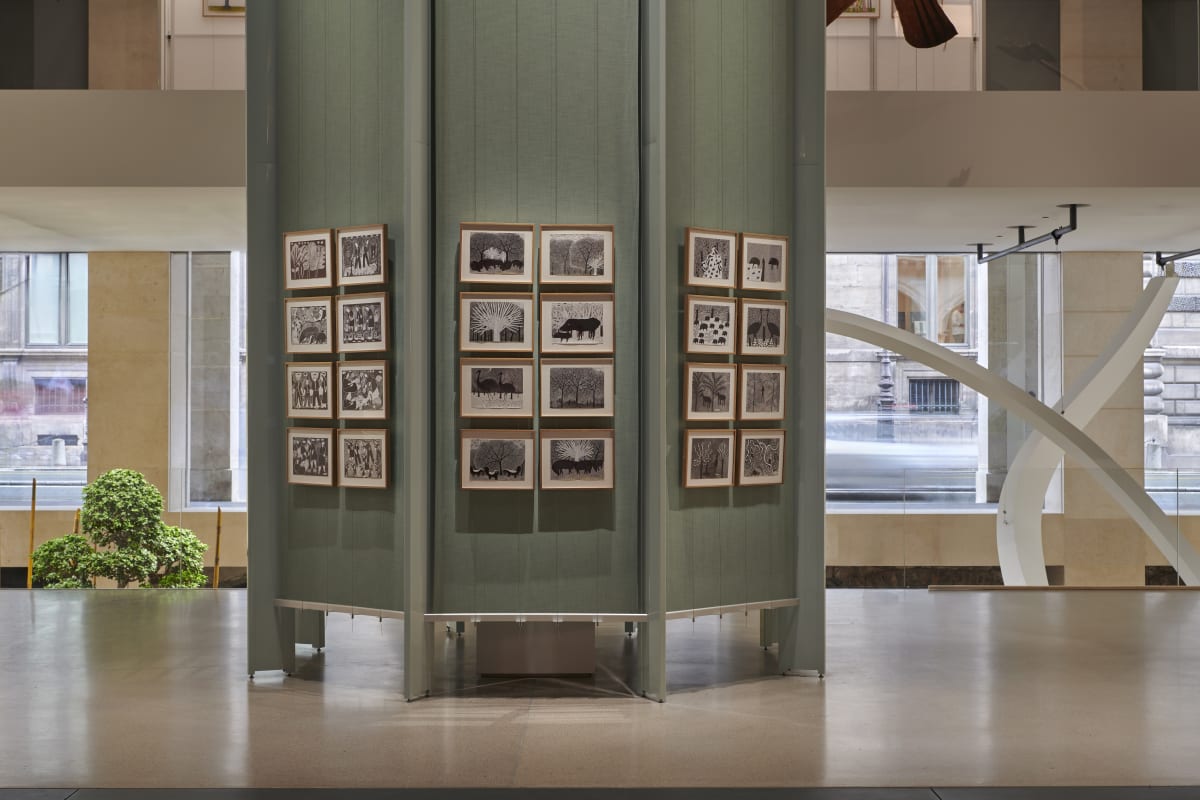Osvaldo Pitoé Paraguayan, b. 1963
Osvaldo Pitoé was born in Pedro P. Peña, a village on the banks of the Pilcomayo River on the Paraguay-Argentine border. In 2006, his hometown was destroyed by a shift in the river’s path and its inhabitants were forced to move inland to Cayin´o´Clim, a Nivaclé community located on the outskirts of the Neuland Mennonite colony of the Gran Chaco. The colony was established in 1947 after thousands of German-speaking Russian Mennonites fled the Soviet Union during World War II, and now occupies territories belonging for centuries to the indigenous peoples of the Paraguayan Chaco. Conditions in Cayin´o´Clim are harsh, marked by brutal policies of discrimination that keep indigenous people living in extreme poverty and disconnected from their ancestral ways of life. In this site, an unusual convergence of two exoduses that led the Nivaclé people to find themselves foreigners in their ancestors’ land, artistic expression has persisted in the form of a collective mission named Artes Vivas. This collective was established through a long-term collaboration between indigenous artists and the Swiss anthropologists Ursula and Verena Regehr, who have promoted their activities since 1998 through exhibitions and publications. Pitoé continues this mission, his work serving as a visual expression of the community’s resistance to erasure.
First drawing with ballpoint pen and paper, the materials provided by visiting anthropologists, and later painting on wooden panels, Pitoé conjures images from the accounts of elders and from his childhood memories. He depicts a way of life on the brink of oblivion: scenes of subsistence practices, of the sacred armadillo species and bottle trees threatened by rapid deforestation, and of the Arete Guasu, a carnival celebration in which deceased relatives are remembered and invited to return to the world of the living. Spectres of a lost past, the images bear witness to the deep bond Pitoé’s community holds with their disappearing environment, its animals, trees, and other non-human beings. Almost dreamlike in their atmosphere, with figures suspended and engulfed by their landscapes, the images inhabit a non-existent space of memory, desire and imagination, communicating in their quietude a loss of autonomy in the dispossession of their territories and the move towards resettlement, forced assimilation and wage labour.
Pitoé first came to prominence in Europe in the landmark exhibition Trees (2019) at Fondation Cartier, Paris, which positioned him as an important emerging voice advocating for the preservation of indigenous ways of living in union with the forest and its ecosystems. Other recent group exhibitions include Dancing With All: The Ecology of Empathy (2024-25) at 21st Century Museum of Contemporary Art, Kanazawa, Japan, Les Vivants (Living Worlds), Fondation Cartier, Paris (2022) and In the Forest. A Cultural History (2022) at the Landesmuseum in Zurich. In 2021, Pitoé participated in a digital residency at the British Museum, London. Pitoé is represented by Cecilia Brunson Projects.


